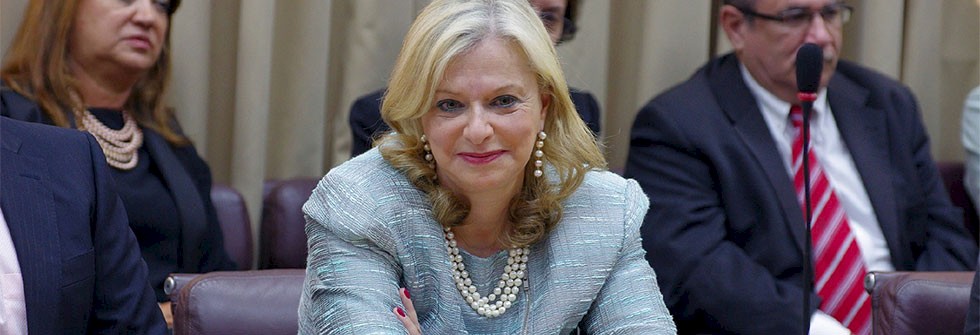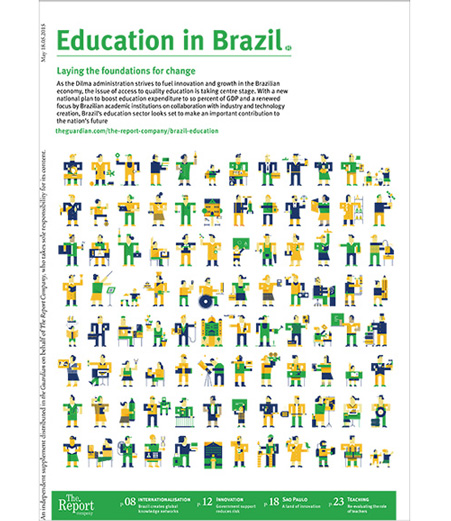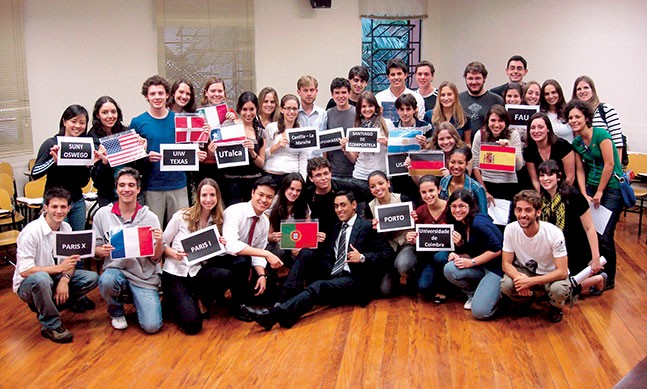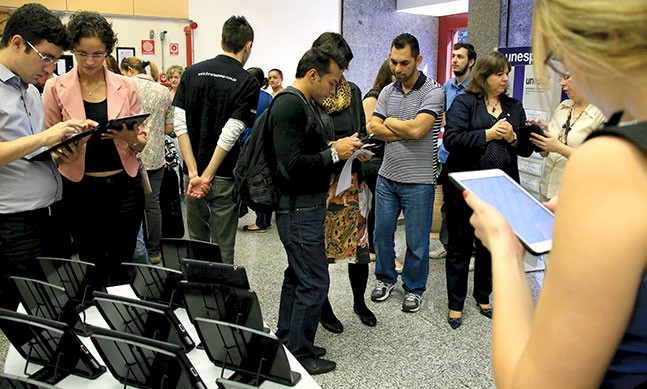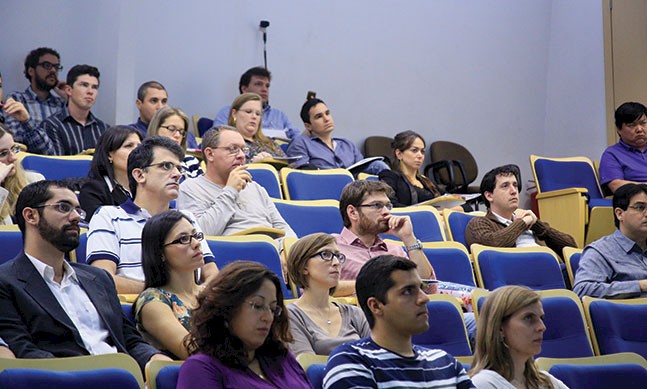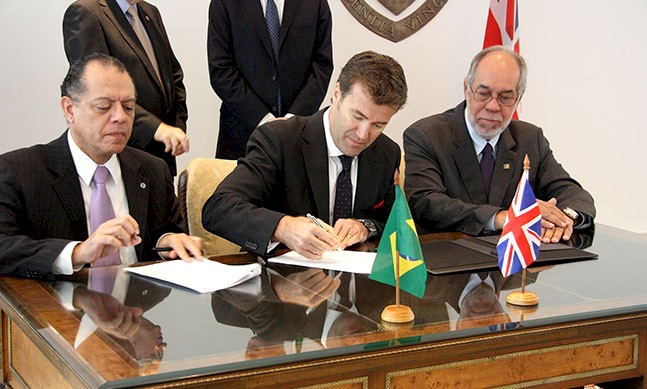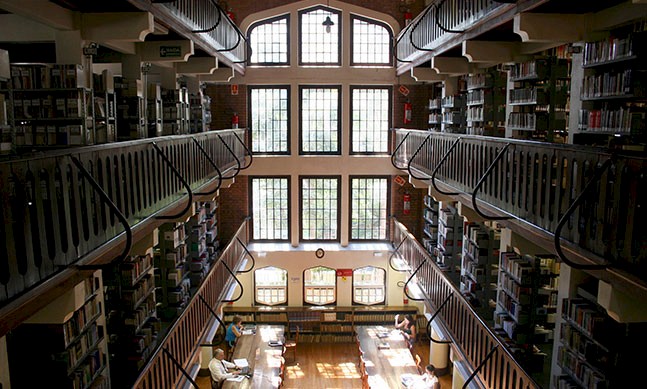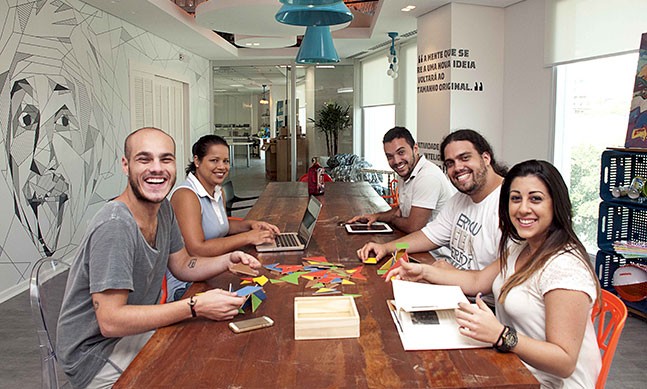Under Governor Alckmin, the number of technical schools in the state of Sao Paulo (FATECs and ETECs) has seen rapid growth over the last decade. The Centro Paula Souza is at the heart of these massive investments, where courses are free and admission is conducted through a series of tests with extremely high demand for every place. Director Laura Lagana’s biggest challenge today is trying to find sufficient teachers, and building a network of international partnerships to keep the quality and expertise as high as possible.
The Report Company: What is the role of the Centro Paula Souza in the education sector and the development of the state of Sao Paulo?
Laura Lagana: Our main goal is vocational education, which we do at all levels from basic training to secondary schools (ETECs) and higher education (FATECs). We train everybody from construction workers to automation specialists at a higher-education level. We have short courses, and we have 100 and 200-hour courses, which are in high demand.
We also have several high schools that teach the regular syllabus as well as offering vocational education so students can attend regular courses in the morning and receive vocational training in the afternoon. Our goal for the next four years is for those students who are already studying with us in the morning to stay on in the afternoon for their three years of high school.
Even though it has been increasing significantly with (national training programme) Pronatec, few young people today get the chance for vocational education. Both the federal and the state governments have been investing in it heavily, however, and there has been great demand for it. This programme will change the profile of our daytime students. At night, however, people come who have finished high school and who work during the day. They come here and after 18 months to two years, they leave with a professional degree.
Sao Paulo state has the largest network of technical schools in the country. The secretary of economic development, science, technology and Innovation hired us for an initiative called Fast Track to Work and in 2014 alone we have trained around 70,000 people in different areas thanks to our mobile labs. These labs are requested in different regions where they have specific requirements, so we can go there and train morning, afternoon and evening.
TRC: What sets the Centro Paula Souza apart from other schools?
LL: Our schools offer courses that are very much in line with the job market and we have very specific courses, such as crop science and mechanised agriculture. There is a tractor factory at Pompeia, for example, but there wasn’t the workforce to operate them, so they came to us to train people and made facilities available. Sometimes these very specific niches come looking for us.
We also have very non-specific courses like welding, however, which is in very high demand because of the current need for offshore platforms for pre-salt oil exploration. Companies love our graduates because they do not have to invest much in their training; they only have to adapt them to the machinery of their company, whereas other graduates come with more general training. Our courses are much more in line with the market. Motorola came to us recently and said that they had looked at the courses on offer here and none of us taught digital technologies the way it should be taught. They reprimanded us, but it was great because we asked them to develop a course with us, which is now being taught. We are very close to the private sector, but I would like us to be even closer.
“Companies love our graduates because they do not have to invest much in their training; they only have to adapt them to the machinery of their company, whereas other graduates come with more general training.”Tweet This
TRC: How do you see the relationship with the private sector evolving?
LL: Usually, they are the ones who come to us, because of their need for trained workers. For instance, car makers came to us when they built a factory in a small municipality close to Sao Carlos. They asked us to build a school right there but it wouldn’t have worked, but the interesting thing was their desire to benefit the municipality. So in the end we created a decentralised class on site, with the laboratory in Sao Carlos, 20 km away. The municipal government paid for the students’ transport.
TRC: How have you been able to grow so quickly?
LL: In the year 2004, we had sixteen higher education schools, now we have 63. Back then we had 105 ETECs, and now we have 218. The number of courses also exploded and their clear goals are both providing human resources for the private sector and giving young people a path to follow.
We could never have done the work we did if we hadn’t been a priority for the state government. In 2004, we were given R$4 million for equipment; today we have over R$50 million. We were lucky enough to have a government that saw our needs, and not only because the country needs this to grow and develop, but also because the people demanded it. The overall investment of the government in Centro Paula Souza went from R$252 million in 2004 to R$1.8 billion in 2014.
TRC: Can you give us some numbers in terms of student growth?
LL: Ten years ago we had 85,000 students at the ETECS. Today we have 212,000, which is a 148 percent increase. Our FATECs had 15,191 students, and now we have 70,789 students, which is a 366 percent increase. There has been a lot of talk about young people not wanting to work or study, but they are in need of guidance. Regular education doesn’t motivate them so they need training that is relevant to their reality and that is organised, safe and connected.
What we end up doing is giving students access to the job market, or initiating them in a career. Since we have more students than places, candidates have to go through a selection process. They have to study to get in, and if they have to study, it means they really want it. We have more than 71 higher education courses (FATECs) and around 135 at technical levels (ETECs), so the array on offer is huge.
It is also in the local government’s interest to give their youths that guidance, so they have contributed a lot. If the local workforce is not well-trained, companies will never set up in a place, so some mayors have offered us land and even built schools for us.
Thirty-seven Paula Souza schools were among the top 50 institutions in Brazil for the National High School Exam (Enem). Our image is built on such results, as well as the fact that our students go straight into the job market easily. Our greatest challenge today is hiring enough teachers. Who can teach a course on metallurgy in a place like Pindamonhangaba? Only someone who works in that field in the city.
TRC: How have you ensured that you are attracting the right teachers?
LL: This is another reason to have a good brand, because teachers want us on their CVs. Plus it isn’t easy for those with masters and doctorates to find work these days. I wanted to expand our courses on construction, but I just cannot find the teachers. This is our biggest bottleneck - our students don’t have to have the latest equipment at their disposal, they just need to understand the idea behind it. We can always find or build facilities, but hiring the teachers is still a challenge.
TRC: What are you doing in terms of internationalisation?
LL: Internationalisation has only recently been among our goals. We have exchange programmes and we have been receiving many foreign universities and building partnerships, but we can still do more. Universities are naturally more international, and Centro Paula Souza is only just starting to reach out overseas.
This process is also being driven by companies. They need trained professionals, so they go to the secretary of economic development, science, technology and innovation, which sends them here. Universities do that as well, but we are much more flexible. We are better disseminated throughout the state and have a stronger connection to industry. It is in our DNA.
Even so, we still need to improve. Companies bring us technological developments and we start thinking of how best to partner up. The only other institution with a course like ours at Pompeia is Oklahoma. Everything that comes to life here is born out of the work of two or three parties; the state, the city and the private sector, and the convergence of these three entities is crucial.
For instance, Marilia in Sao Paulo is highly focused on agricultural production, so before we established a FATEC there, we met with its companies and created a syllabus. They already know the professionals we produce because they helped shape their training. The municipal government rented the building, we created the course with the companies and then implemented it.
TRC: What has the school achieved over the years in terms of social inclusion?
LL: I am very proud of the fact that we have opened two schools in the two largest slums in Sao Paulo: Heliopolis and Paraisopolis. As you walk through Heliopolis you ask yourself “how do you fix this?” It's almost impossible, but we need to help them somehow; we can't just tear it all down and rebuild it.
Because there is an entrance exam, the school also is open to those passing the exam, whether they are from the favela or not. It takes time for the community to understand that this is their facility, so we collaborate with them on everything from the colour of the building to the courses it should offer.
TRC: What is the legacy you want for an institution such as this in terms of Brazilian education as a whole?
LL: We have to bring high-quality, free public education back to our schools. Furthermore, it is crucial that education professionals are proud of their work in the public sector. People have to believe that education can change people’s lives. Paula Souza is an example that education can do that by preparing people for life, for the job market and a career.


